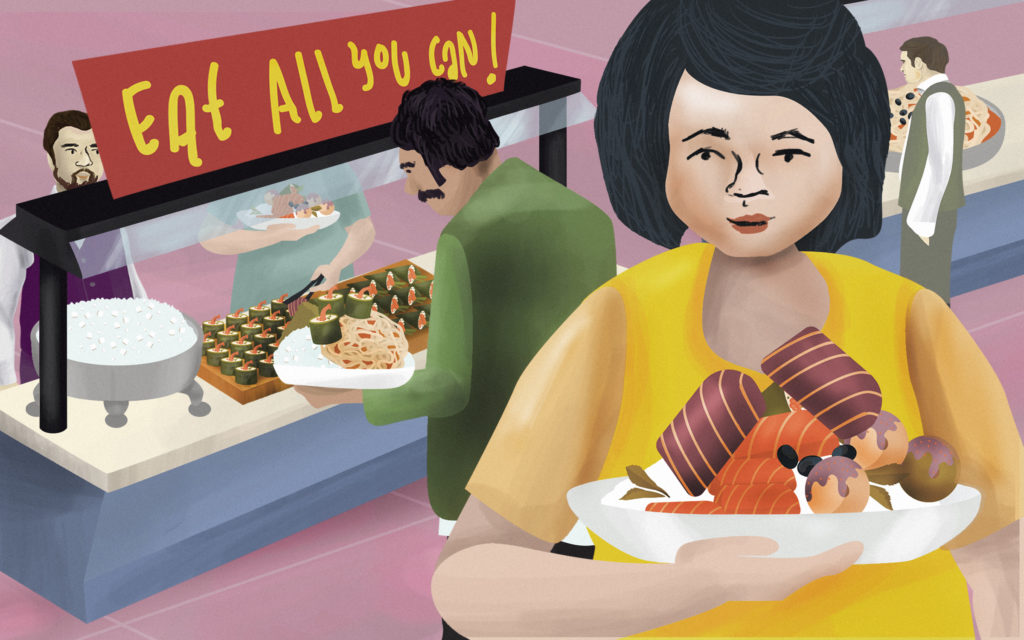Experts agree that it’s time to review common practices and adopt new ones
The numbers are devastating—an estimated 2,175 tons of food scraps end up in trash bins on a daily basis in Metro Manila. Filipinos waste 308,000 tons of rice every year, and on a global scale, 1/3 of the food produced globally every year never reaches our plates.
According to the Food and Agriculture Organization (FAO), if food waste were a country, it would be the third largest greenhouse emitter, just after the United States and China.
Be exact with how much food you’re producing
Melody Melo-Rijk, RND, MBA-HRM, project manager for The Sustainable Diner of the World Wide Fund for Nature Philippines (WWF-Philippines), suggests that the first step to solving food wastage is to know how much food you’re producing.
“It is imperative to have a baseline data. You can’t solve a problem without really measuring how much is wasted, and industries cannot value what was lost if they do not analyze the numbers. Wasting food is wasting money, resources, effort spent on producing food, and most importantly, it has environmental impact, specifically the amount greenhouses gases it contributes. Eventually, if they start the food waste measurement, it is suggested that they continue tracking the food waste they generate and it is with hope that this practice becomes a norm for the foodservice industry.”
Partner with NGOs that collect food waste or redistribute food
Small enterprises will find it easy enough to partner with a non-government organization that specializes in food waste collection. Chit Juan, founder of ECHOstore Sustainable Lifestyle and Slow Food’s Councilor for Southeast Asia, says, “There are NGOs who do pickups of food waste, like Food Garage. When we had an event for Slow Food called World Disco Soup Day, we asked them to come get the extra vegetables and other ingredients.”
Juan admits that she’s unsure if there are bigger enterprises that have adapted this practice, but perhaps it is doable with the right logistics and planning .
Melo-Rijk mentions that there is a law called the Food Donation Act of 2009, which encourages such practices. “The law was considered instrumental in addressing both the food wastage and food insecurity in the country. But since it is voluntary, results are still wanting. However, there are some pending bills in the upper and lower chambers of Congress that aim to mandate food and related businesses to donate food-safe surpluses to the poor.”
Reena Francisco of Slow Food Manila and ECHOstore Sustainable Lifestyle states that establishing tie-ups with food recyclers is also a good idea. “Repurpose food into creative new products, like donuts into donut chips, breads into biscocho or pudding,” she suggests.
Reincarnate and rethink your ingredients
Juan stresses that always serving fresh food is one of the best ways for small enterprises to lessen their food wastage. “It’s okay to run out of stock, as long as you give options to customers,” she says. “Like for salads, we offer different greens, and not just one kind, so they have choices. The ‘ugly’ vegetables contain the same vitamins as pretty ones, so the ‘ugly’ vegetables are made into our Mean Green juice.”
For bigger enterprises, Juan suggests to plan their stocking levels carefully, especially when it comes to perishables, such as fruits and vegetables. Too much meat or overstocks can be used for daily specials or ‘off the menu’ offerings.”
Francisco suggests working with local farmers and buying only products that are in season. “The more products that are in season, the more flavorful they are,” she adds.
Be mindful of restaurant promos
Buffets abound in the Philippines because of our love for getting the most bang for our buck, but Francisco suggests to rethink such promos. “Stop full spread buffets, and rethink the definition of ‘eat all you can’,” she says. “This just encourages overeating and eating with your eyes. Overpreparation leads to wastage, and it cannot be donated properly to charity or to the marginalized. Change this with proper planning—practice root-to-leaf, nose-to-tail food planning.”

Look into your training practices
Even prior to serving your first customer, everyone in the F&B industry adheres to strict training, which should be examined, according to Melo-Rijk. “Proper training for the kitchen and service departments in terms of preparation and service of food is one way to lessen food waste.”
Offer portion control to customers
A win-win situation would be to give customers the choice of how much food they can truly consume. Juan says, “Restaurants should offer choices. I saw a tonkatsu restaurant that offers smaller sizes for smaller appetites and budget. Same taste, lesser quantity. Rice should be given in portions as well.”
Changing training modules, long-time practices, and putting in the logistics and partnerships for an efficient food waste management may look like much work right now, but Melo-Rijk says that in the long run, the benefits are far greater than the cost.
“Food waste management is never an added cost to a company,” She says. “The hidden costs behind food waste—transport cost, labor cost, utility cost, disposal cost—are often the biggest in a food business. Investing in something to track and monitor your food waste has long-term savings for companies, helps your community, and protects the environment. It’s a triple bottom line.”
Originally published in F&B Report Vol. 16 No. 1

















































